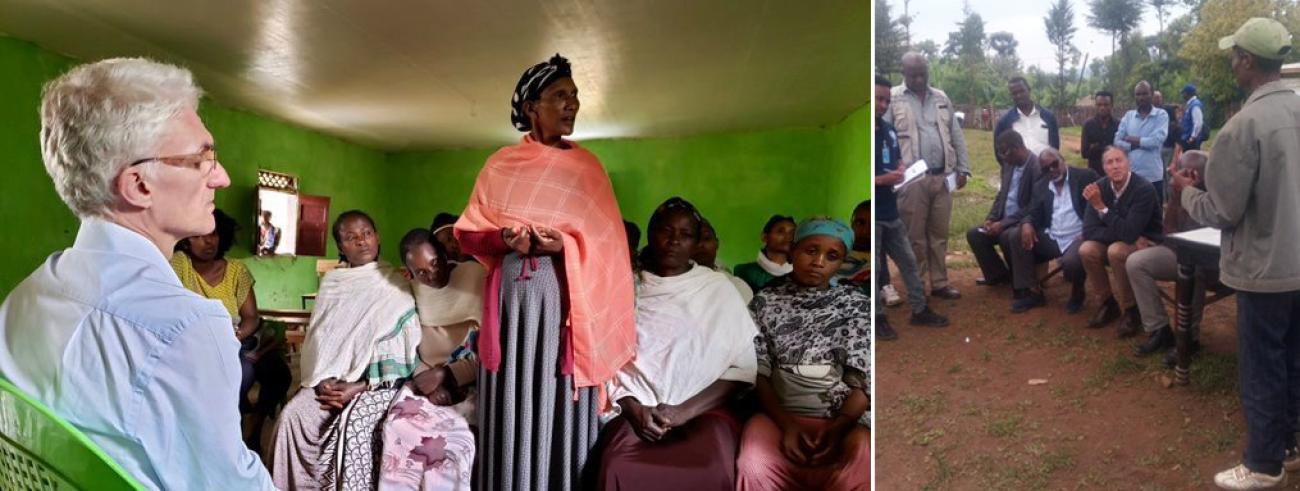Under-Secretary-General for Humanitarian Affairs and Emergency Relief Coordinator, Mr. Mark Lowcock, and Assistant Secretary-General for Peacebuilding Support, Mr. Oscar Fernandez-Taranco, visited Ethiopia on September 9 and 10 to see firsthand the response to the displacement crisis in Ethiopia and the Government’s initiatives to find durable solutions for internally displaced persons (IDPs).
Under-Secretary-General for Humanitarian Affairs and Emergency Relief Coordinator Mark Lowcock called today for additional funding to support the Government-led response to Ethiopia’s displacement crisis and wider humanitarian needs. More than 8 million people in Ethiopia need food, shelter, medicine or other emergency assistance.
speaking at the end of a two-day mission in Ethiopia, Mr. Lowcock called today for additional funding to support the Government-led response to Ethiopia’s displacement crisis and wider humanitarian needs. More than 8 million people in Ethiopia need food, shelter, medicine or other emergency assistance.
“Ethiopia has to cope with persistent and multi-faceted humanitarian problems, including drought and flooding, disease outbreaks and inter-ethnic violence that has in recent years forced millions of people to flee their homes,” said Mr. Lowcock.
The delegation met recently returned families and other conflict-affected displaced people in Chitu Kebele in the Yirgachefe district in Gedeo, which is one of the zones most affected by intercommunal violence that has caused displacement and loss of livelihoods since 2018.
“I support the Government’s desire to find durable solutions to displacement problems, and am under no illusion as to how difficult that is. While many people have now been able to return to their home areas, some remain in limbo, living close to their destroyed or damaged homes and worried they will not have the opportunity to restart farming and other livelihoods they lost when they fled last year. The Government is trying to deal with this, many people in host communities are displaying enormous generosity and humanitarian agencies are supporting them, but more international support is needed too,” added Mr. Lowcock.
Prior to the Government’s efforts to return people to their areas of origin, which started in May 2019, there were 3.2 million internally displaced people in Ethiopia, including 2.6 million who fled conflict and 500,000 who were displaced because of climate-related causes.
The 2019 Ethiopia Humanitarian Response Plan, which requires US$1.3 billion to help 8 million people, is only 51 per cent funded. The biggest contribution currently comes from the Government of Ethiopia, which has provided $288 million for the food sector on top of contributions from international donors.
More funding is urgently required for nutrition, health, shelter, protection, education and other needs. While aid is a critical lifeline for millions of Ethiopians, most humanitarian needs in Ethiopia are recurrent and predictable. Long-term solutions are required to reduce needs and build resilience.





